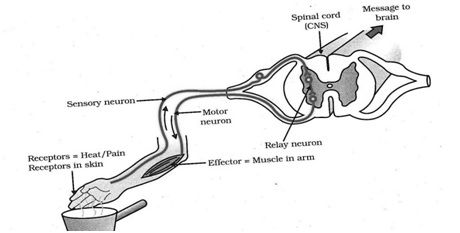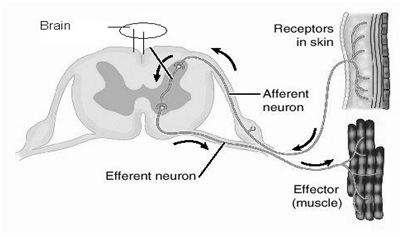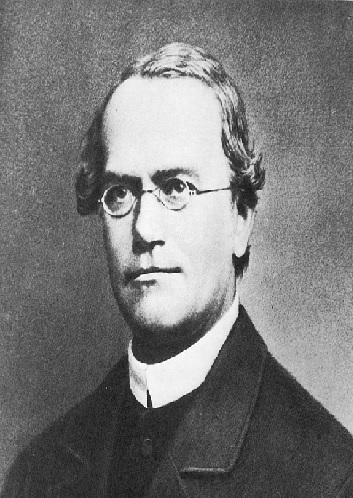Human actions are both voluntary and involuntary.
Voluntary actions depend on our will. Clapping hands, reading, writing, playing, talking etc are voluntary actions.
On contrary, some actions of our bodies cannot be controlled by us. These are called as involuntary actions. Working of heart muscles, salivation, blood pressure, vomiting etc are some involuntary actions of our bodies.
Some sudden actions in the body in response to something in the environment are called as Reflex Actions. In this case, we do something without thinking about it or without feeling in control of our reactions.
Reflex Actions can be defined as –
Those involuntary biological actions that happen in living bodies due to the effects of some internal or external, visible or invisible stimuli are called as the Reflex Actions.
Let us see how control and coordination is achieved in such situations.
Reflex actions occur without thinking or these actions do not involve thinking process. It is because, thinking is a complex activity and it involves a complicated interaction of many nerve impulses from many neurons. And, it is sure to consume lots of time.
To avoid this condition, our bodies are designed accordingly. Nerves detecting the impulse are connected to muscles or glands that produce responses. This connection is called as a Reflex Arch.

In other words, the path of a reflex action is called as a reflex arch. There are five parts of a Reflex Arc- (i). Receptor,
(ii) Sensory nerve,
(iii) Nerve Centre,
(iv) Motor nerve and,
(v) Muscle of the effecter organ.
Nerves from all over the body meet in a bundle in the spinal cord on their way to the brain. Reflex arches are formed in the spinal cord and the information input also goes on to reach the brain
As thinking process in animals is not fast enough, the reflex action evolved in animals.
A complete network of neurons is needed for the thinking process to develop and many animals have little or none of this network.
Thus, in the absence of true thought process reflex action is evolved as an efficient way of functioning. In fact, even if a complex network of neurons exists, it cannot replace reflex arcs in terms of quickness.
Images NCERT New Delhi




